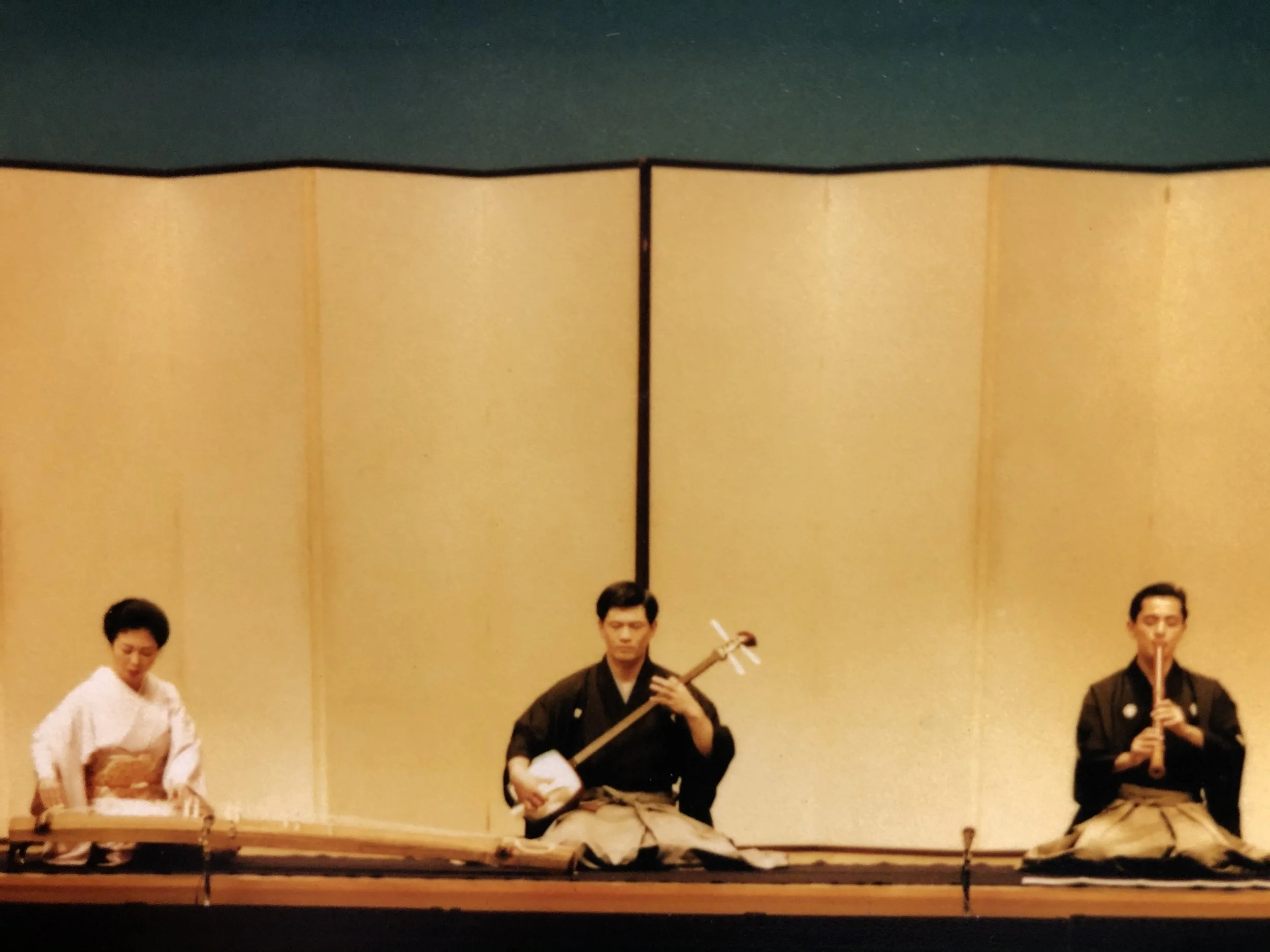Restoration
My dad was a really good teacher when it came to music. Not so much if we asked for help with our homework, but I can’t fault him in his transmission of this music to me…except maybe for his treatment of the scores. He wielded pens, pencils, and Wite-Out™ like Jackson Pollack, marking things up to the point they were nearly illegible to anyone but him.
Uh… (this is my copy of Zangetsu, considered one of the most challenging in all of Japanese music.)
In the end, they would look almost like he was taking something out on them. For me, who sat across from him as he did it, it makes a kind of sense. He would often make changes to the arrangements—sometimes minor, sometimes significant—circle them, then change his mind and cross them out. Revisiting them now is especially tricky because a lot of time has passed and I sometimes can’t remember what he meant by a certain mark here or there. And while I want to teach my students these particular versions of these pieces, I can’t ask them to try and read the scores as they are.
The old scores are hard to come by, and are not particularly cheap. I’m also partial to my own, especially the ones with my father’s marks in them. So, I’ve spent a good portion of the last year scanning my scores and trying to clean them up so I can read them better and thus teach them to others.
This week, it’s been Kon Kai (吼噦), a translation of which could be The Lonesome Cry of the Fox. Certain pieces resonate with me more than others, either musically or emotionally, or both. Kon Kai is a piece I come back to again and again because of the beautiful complexity of the music, as well as my love of Japanese folklore.
Kon Kai (before)
Kon Kai (after)
Foxes are mythical creatures in the old stories and often masquerade as people, either to make mischief or, in this case, because they fall in love with a person. The song tells the story of a young boy seeking a priest to care for his sick mother. Unbeknownst to the family, a fox has fallen in love with the child’s mother and disguises himself as the priest. When the real priest arrives, he reveals the fox’s true form and chases him away. The sound of the priest rattling stones at the heels of the fox as he escapes down the path is depicted through music in an unusual staccato passage.
from Tsurigitsune, a kyogen piece depicting a fox disguised as the priest Hakuzoshu by the ukiyo-e artist Yoshitoshi
The original arrangement is from Kodo II, and my original score is from my father’s primary teacher, Kimura Yusai. It’s interesting to peel back the layers (to the best of my ability) and see the evolution of this score. From the original, to the variations my dad made as he taught it to me, to his later versions where he ignored some of the changes he made and went back to the original.
Playing Kon Kai with Togashi Taeko and Mamada Noboru in my last concert in Japan in December of 1991 before I moved back to Seattle. (link to audio)
Occasionally, when my dad would work on a piece with me, if I made a mistake he’d make certain marks to “remind” me not to make that same mistake again. This was the only time I’d get annoyed because rarely was it helpful to have a big black or red mark in a passage that I was already struggling through. At the same time, it was hard not to laugh, mostly because he did it knowing it annoyed me which would amuse him. He was always good at injecting humor in our lessons, especially when I’d get frustrated—but a big red scribble in the middle of a line of music is kind of the definition of an inside joke.
The process of scanning and Photoshopping is tedious and painstaking. It’s so easy to miss something until I play through it and from beginning to end, it’s over 15 minutes long.
Ultimately, as with anything like this, it’ll never really be finished, but they’ll get me by for now.
More anon,
Hanz



